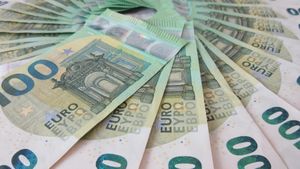Recent insights from Gallup reveal a notable shift in American economic confidence, highlighting stark partisan divisions as the nation moves forward under the new presidency of Donald Trump. The survey, conducted from January 2 to 15, 2025, shows the Economic Confidence Index now sitting at -19—a relative decrease from the previous -14 recorded just last month. This index provides a snapshot of Americans' perceptions of the current economic conditions as well as their outlook for the future, and it has consistently reflected the political sentiment enveloping the nation.
Notably, the latest findings show Republicans' confidence increasing by 30 points since the presidential election, where Trump triumphed over former Vice President Kamala Harris. Conversely, this statistic directly corresponds with a significant drop of the same magnitude among Democrats. Today, GOP voters report a confidence score of -42, whereas Democrats hover at +7. Independence sentiments have also improved, rising 16 points, and currently, they stand at -18.
The data holds even more nuance when examining how Americans perceive their current economic conditions. Currently, 26 percent describe the economy as "excellent/good," yet this number reflects stark differences along party lines: 45 percent of Democrats express optimism compared to only 26 percent of GOP voters. This is dramatic, especially when considering last October's sentiments, where 51 percent of Democrats felt the economy was "good," illustrating the substantial downturn over the last few months.
Historical data adds another layer to the story. The highest score for the Economic Confidence Index, established by Gallup, was +56 back in January 2000. On the flip side, the lowest was -72 recorded during the financial crisis of October 2008, indicating just how far economic sentiment can sway within the American public. Following Trump's latest success at the polls, confidence among Republicans saw upward momentum, contrasting sharply with the downward trend visible among Democrats, which echoes sentiments observed after the 2020 election.
Interestingly, the survey indicated overall dissatisfaction with the economic outlook, with 34 percent of U.S. adults believing conditions are improving, compared to 57 percent who argue they are declining. This disagreement highlights the polarized views on economic performance and satisfaction with the current administration's handling of fiscal issues.
The economic climate, influenced by mounting inflation, plays a primary role in shaping these sentiments. Inflation under Biden has been grinding against the buying power of American families, creating frustration and shifting perceptions about economic success. Whereas previous Democratic strategies focused on stimulus spending and infrastructure investment, they have seemingly failed to resonate with many voters disenchanted with systemic economic issues.
Frustrated voters—many of whom have faced economic stagnation for two decades—may find themselves reassessing their political loyalties. This dissatisfaction among the working class stems from their experience of being left behind by the forces of globalization and technological advancement, which have predominantly favored the wealthier segments of society. Research indicates wealth inequality continues to climb, adding complexity to America's economic narrative.
The broadening gap between party lines intensifies the scrutiny each party faces when crafting their economic agendas. With wealth concentrated among the top echelons of society, the challenge now lies for future political leaders to bridge this divide and address the palpable discontent. Democrats may face tough questions about their ability to rally public support, as sentiments among their constituents dwindle.
Shifting economic confidence reflects not only the current priorities of Americans but also their anticipations going forward. With the new presidential administration attempting to navigate these complex challenges, many citizens remain watchful and skeptical. The fluctuative nature of economic performance, coupled with the ideologies of the parties representing them, leaves voters searching for sensible solutions amid growing economic anxieties.
For now, the variable positions of both parties suggest looming tensions as they vie for the approval of voters feeling disconnected from the economic frameworks erected over the years. Upcoming elections will no doubt serve as barsometers for gauging whether partisan confidence can stabilize or if voter discontent will burgeon even more, ushering potential changes to the political status quo.



